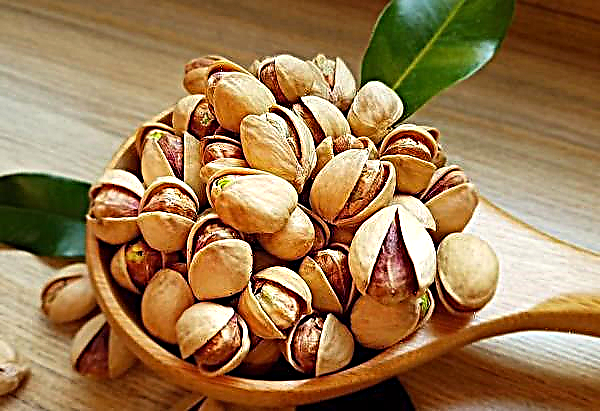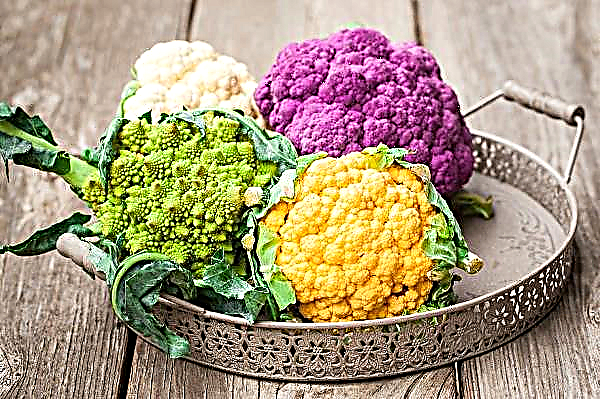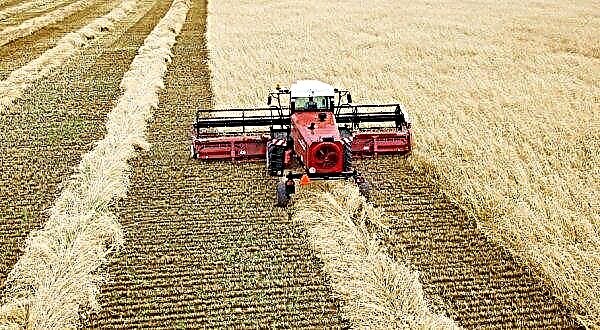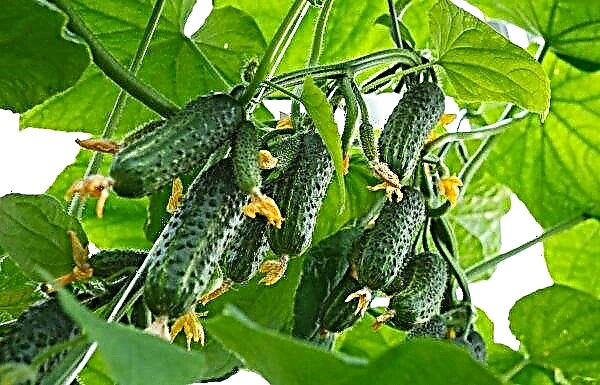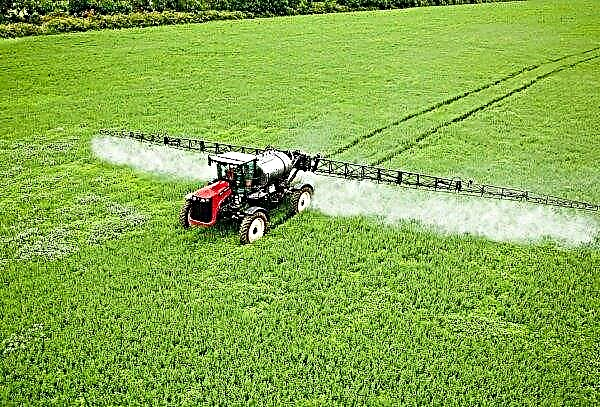Cauliflower is no less common than its white relative, and has recently been included in the diet of both adults and children from infancy. Heat-loving and demanding, it was grown for a long time only in southern countries, but after the cultivation of cold-resistant varieties, it spread widely in temperate climates. The features of the use of this vegetable and, in particular, its leaves will be discussed in the article.
Description of Cauliflower
The popular vegetable got its name due to the fact that the inflorescences of the plant, collected on thick legs in dense cream-colored heads, are most often used for food. The leaves enveloping them prevent sunlight from entering the flowers, so chlorophyll does not form in them.
Did you know? The first vegetable to be grown on the Moon in experimental mini-greenhouses will be cabbage.
This property explains the gentle, bitterness-free taste and white color of the inflorescences, although varieties with green, purple and orange heads have recently been bred. Among all related species, cauliflower is several times richer in protein and vitamin C and has the highest taste. The high content of other vitamins, such as A, E, H, group B, an impressive list of macronutrients (potassium, magnesium, calcium, phosphorus) and the most important micronutrients - iron, iodine and others, makes this juicy vegetable an indispensable food product.
Among all related species, cauliflower is several times richer in protein and vitamin C and has the highest taste. The high content of other vitamins, such as A, E, H, group B, an impressive list of macronutrients (potassium, magnesium, calcium, phosphorus) and the most important micronutrients - iron, iodine and others, makes this juicy vegetable an indispensable food product.
Inflorescences with delicate fiber are easily digested by the stomach without irritating the mucous membrane, and due to the low calorie content of 25 calories per 100 grams, they are part of a variety of diets.
Useful properties for the body
Due to the complex and rich biochemical composition of the vegetable, the benefits of its use are a whole list:
- helps to improve digestion and cholesterol;
- strengthens the heart and blood vessel walls;
- prevents the occurrence of inflammatory skin diseases;
- improves brain function and increases stress resistance;
- used for the prevention of cancer.
Important! Cauliflower is not recommended for people with high acidity of the stomach, acute diseases of the gastrointestinal tract and with gout.
Are cauliflower leaves edible?
Before cooking, the inflorescence is usually cleaned of integumentary leaves, which are then simply thrown away. Few people think about whether these leaves are eaten and whether they can be used in any other way.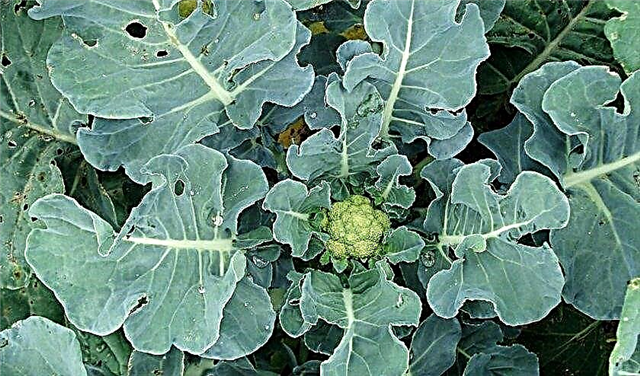 But their composition and properties are no worse than those of inflorescences, and careless squandering makes it impossible to diversify the diet and bring novelty to familiar dishes. External straight coarse and hard leaves will not work, but internal, enveloping the head, more tender and juicy can and should be used.
But their composition and properties are no worse than those of inflorescences, and careless squandering makes it impossible to diversify the diet and bring novelty to familiar dishes. External straight coarse and hard leaves will not work, but internal, enveloping the head, more tender and juicy can and should be used.
Features of use
Consider how to prepare the described leaves. Cauliflower goes well with other vegetables and foods. Inflorescences along with leaves can be stewed, baked, pickled, added to salads, soups and vegetable stews.
At the same time, to preserve the maximum amount of nutrients in the vegetable, it should not be blanched before processing, but steamed. Rolls fried in a batter from leaflets stuffed with minced meat or any vegetables can serve as a full-fledged independent dish or as a side dish for meat or vegetables.
The original application of more mature and coarse leaves will be an appetizer that can be spread on a sandwich: it is prepared from boiled and chopped tops with a blender with the addition of salt, lemon juice and favorite spices.
Did you know? In Japan, cabbage is grown not only as a vegetable, but also for decorative purposes. With the onset of cold weather, gardens of colorful cabbage, roses and chrysanthemums look especially impressive.
Leaves of young heads are a great alternative or addition to leaf lettuce when decorating dishes with fresh vegetables. To spice them up, they can be pre-marinated for half an hour in soy sauce or standard marinade for gooseberries. Especially popular is a salad of cauliflower leaves and walnuts.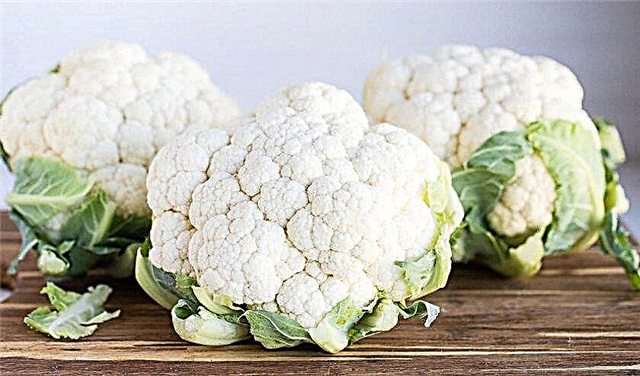 In addition to use in cooking, the leaves of the vegetable in question are also used in cosmetology, along with white cabbage and seaweed. The product is used fresh or pickled due to the whitening effect and the ability to make the skin supple and elastic.
In addition to use in cooking, the leaves of the vegetable in question are also used in cosmetology, along with white cabbage and seaweed. The product is used fresh or pickled due to the whitening effect and the ability to make the skin supple and elastic.
You can, for example, make an excellent mask for the face and neck by freezing cubes of chopped cauliflower and sage leaves, drenched in hot water and infused for 2-3 hours.
In folk medicine, for the treatment of non-healing wounds and burns, a slurry is made from raw protein and chopped cauliflower leaves, applied to a sore spot and fixed with a bandage. Fresh juice plants treat acute forms of gastritis and hemorrhoids, used to rinse the mouth with gum disease.
How to store cauliflower?
The low shelf life of cauliflower does not imply long-term storage.
Fresh inflorescences can be stored for up to 2-3 months in the basement or cellar, if you dig up the bushes along with the root and hang them upside down. In the refrigerator, storage of heads wrapped in cling film can last up to a month in the fresh vegetable compartment. Frozen in disassembled form for convenience, the inflorescences retain useful properties throughout the year. Fresh dense heads with green elastic leaves, without signs of decay and not damaged by insects, are suitable for storage.
Frozen in disassembled form for convenience, the inflorescences retain useful properties throughout the year. Fresh dense heads with green elastic leaves, without signs of decay and not damaged by insects, are suitable for storage.
Important! The appearance of the first dark spots on the heads indicates the beginning of damage, which cannot be stopped, so the inflorescences must be immediately put into processing.
Cauliflower is a wonderful and healthy vegetable; it serves as an affordable, tasty and healthy component of a complete diet for all ages year-round.


